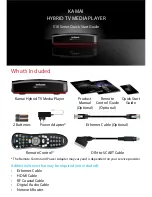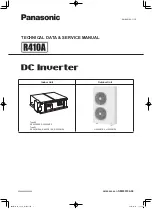
46
First start
WAVECOM Decoder W74PC, W-PCI/e, W-CODE, W-CLOUD Manual V9.1.0
Demodulator Menu
Using the
Demodulator
menu all parameters for decoding may be edited. In addition to baud rate, the
options and values for mode, shift, center frequency, offset frequency, input and input gain may be man-
ually entered.
The availability of the functions depends on the active mode.
Auto
Click on the
Auto
button to enable a mode. Shift, center frequency and baud rate is automatically calcu-
lated and adjusted. The new value is selected by double-clicking on the preset value or by clicking
OK
.
Mode...
In the
Mode
menu the demodulator mode may be selected.
Most HF, VHF or UHF modes feature a pre-selected demodulator mode for optimum performance, but
sometimes different demodulators may be chosen.
AM
Satellite weather charts are transmitted using AM. This demodulator uses the quadrature I/Q demodula-
tion method.
The level displayed by the level indicator corresponds to the AM modulation depth of the signal. The gain
and the amplitude offset may be set using the
Demodulator
menu.
BPSK
BPSK shifts the carrier phase ±180 degrees. For carrier recovery a Costas loop is used - this is a PLL with
a special phase comparator, which removes the payload data from the PLL loop. The input signal is then
down-converted to base band by mixing the carrier in a complex mixer, and the resulting signal is the da-
ta signal.
BPSK is almost exclusively used for satellite data links.
CW
The CW demodulator utilizes a steep, adaptive band pass filter and automatic amplitude control. The AGC
attack time may be adjusted according to the propagation conditions. The filter response may be set to
Slow
,
Normal
or
Fast
. This demodulator produces high quality CW decoding. It is important to select the
appropriate receiver AGC response (normal or slow).
DSP
The DSP mode utilizes an I/Q demodulator (Hilbert transformation). The received signal is split into an in-
phase component and a quadrature component. Next, amplitude normalization takes place and the result-
ant signal is used for the frequency conversion. This method is characterized by a linear relationship be-
tween the received frequency and the output voltage of the demodulator.
The DSP demodulator has a good signal-to-noise ratio and yields very good results under most conditions.
DPSK
In differential PSK the absolute carrier phase cannot be used for data recovery as is the case with BPSK
and QPSK. To decode multiphase DPSK (up to 16DPSK) the input signal is mixed with a complex, phase
regulated reference signal. The resulting data reduced signal is then filtered in a low pass filter. The fol-
















































